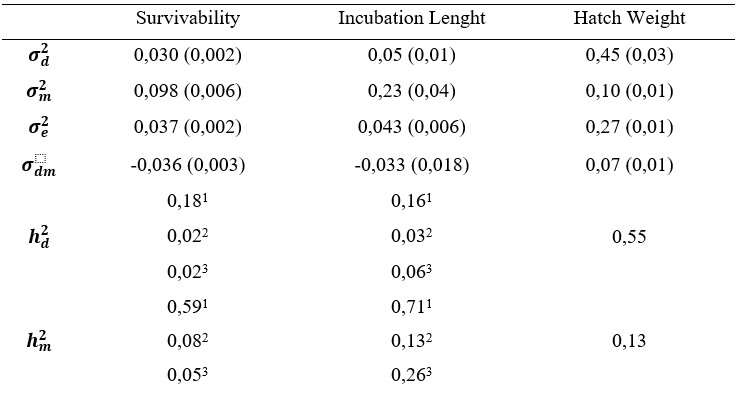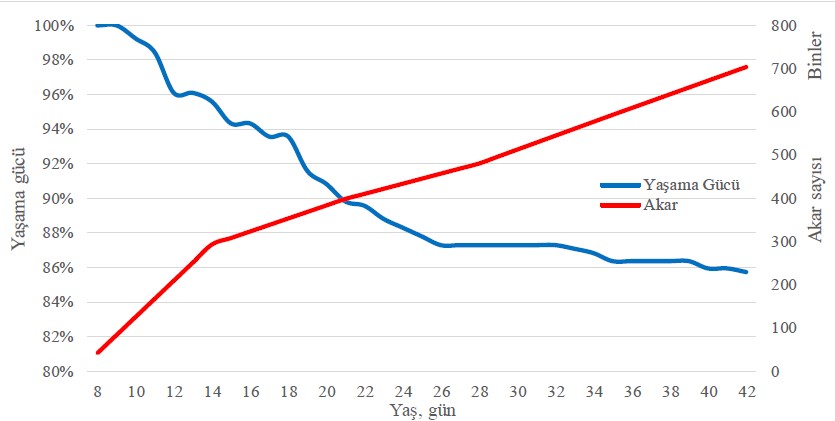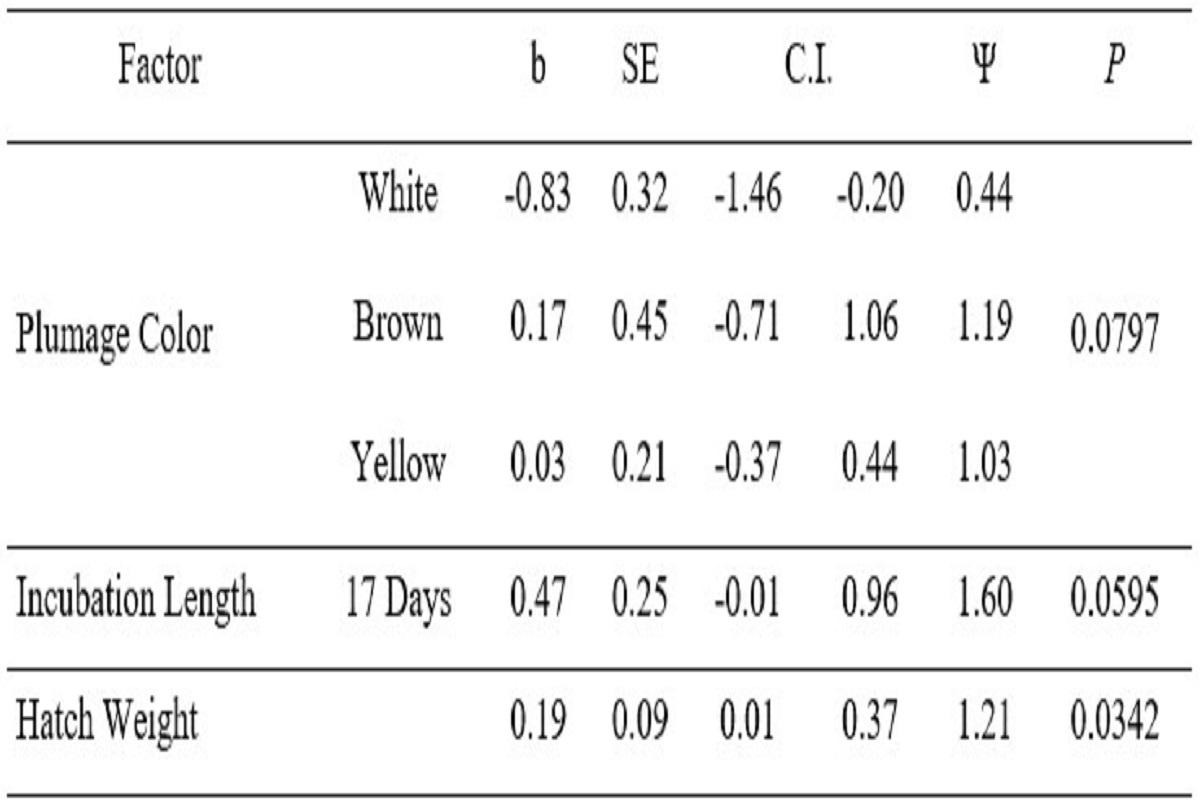
Factors Affecting Survivability in Japanese Quail (Coturnix coturnix japonica)
This study investigated the effects of feather color, incubation length, hatch weight, parasite infestation, and genetic factors on the survivability of quails up to 42 days of age.
Feather Color: The survival probability of white quails was found to be 56% lower compared to other colors.
Incubation Length: Quails hatched after 17 days of incubation had a higher survival rate than those hatched after 18 days or more.
Hatch Weight: A 1-gram increase in hatch weight increased the probability of survival by 21%.
Parasite Infestation: Quails exposed to poultry red mites had a 2.63 times higher risk of death. The risk of death increased by 11% per 1,000 mites.
Genetic Effects: Survivability is influenced by a combination of environmental and genetic factors. Heritability estimates indicate a low to moderate genetic effect.
In conclusion, quail survival is determined by multiple environmental and genetic factors, with feather color, hatch weight, incubation length, and parasite infestation playing significant roles.

Estimation of (Co)Variance Components for Viability, Incubation Length and Hatch Weight in Japanese Quail
This study aimed to estimate the genetic parameters of survival, incubation length, and hatching weight in quails. Data from 2,280 quails were analyzed using the AI-REML method.
Direct and maternal heritabilities for survival: 0.18 and 0.59, but after adjustments, they were estimated as 0.03-0.02 and 0.08-0.05.
Direct and maternal heritabilities for incubation length: 0.16 and 0.71, with adjusted values of 0.03-0.06 and 0.14-0.26.
Direct and maternal heritabilities for hatching weight: 0.55 and 0.13.
Genetic correlations: - Survival and incubation length: -0.68
- Survival and hatching weight: 0.52
- Incubation length and hatching weight: -0.30
In conclusion, the genetic variation in survival was found to be low, indicating that environmental factors play a significant role.

The Effect of Poultry Red Mite (Dermanyssus gallinae) Infestation on the Viability of Japanese Quail
This study investigated the effect of poultry red mite (D. gallinae) infestation on the viability of quails. The experiment was conducted using 800 Japanese quails and repeated four times. Half of the quails were in the control group, while the other half were exposed to mite infestation.
Findings:
- Infestation significantly shortened the lifespan of quails.
- The mortality risk of infested quails was 2.63 times higher than that of non-infested quails.
-
During the first 26 days, mites caused a high mortality rate, but after day 26, despite an increase in mite density per individual, their lethal effect diminished.
Overall, poultry red mites were found to have a negative impact on the viability of sexually immature quails.

Plumage color, hatching day and hatching weight influence the survivability up to sexual maturity in japanese quails
This study examined the effects of plumage color, hatching day, and hatching weight on the survivability of quails. A population of 2,280 birds was monitored from hatching to 6 weeks of age, and mortality records were analyzed using a threshold model.
Findings:
Overall survivability rate from hatching to 42 days was 93.4%.
Survivability rates by plumage color:
- Wild-type: 92.8%
- Yellow: 94.3%
- Brown: 94.87%
- White: 86.99% (significantly lower than others, P<0.05).
- Birds hatching on the 17th day had a 56% higher survival probability compared to those hatching after 17 days (P=0.07).
- A 1-gram increase in hatching weight increased survival probability by 23% (P=0.03).
Conclusion: Plumage color, hatching day, and hatching weight significantly influence quail survivability. White quails had the lowest survivability, while earlier hatching and higher hatching weight improved survival rates. These factors should be carefully analyzed to understand their impact on survivability.